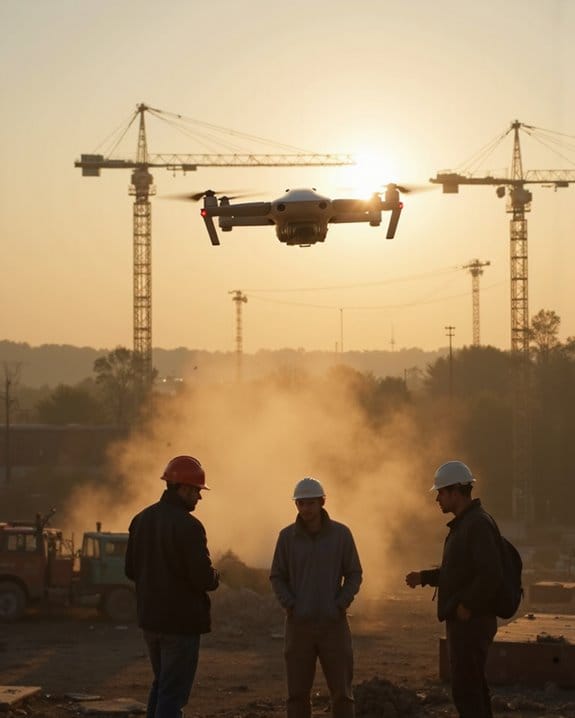Drones won’t fully replace soldiers on the battlefield yet, but they’re reshaping combat. You’ll find swarms with smart targeting, quick decision loops, and real-time coordination—think of Kamikaze or MQ-9 Reaper models. Still, human oversight remains essential for ethical, legal, and practical reasons—AI just isn’t perfect at distinguishing friend from foe. Technical hitches, training gaps, and nuclear risks keep boots on the ground. Stay tuned for a closer look at the edge—and limits—of autonomous warfare.
Key Takeaways
- Drones are increasingly autonomous and capable, but still require human oversight for ethical decisions and to prevent accidental escalation.
- AI-powered drone swarms can react and adapt faster than human soldiers, offering significant tactical advantages in modern warfare.
- Current drones face operational challenges, including targeting accuracy, reliability issues, and delays in real-time data processing.
- Human soldiers remain essential for complex judgment, accountability, and adapting to unpredictable battlefield scenarios.
- While drones will supplement and transform battlefield roles, they are unlikely to fully replace soldiers in the foreseeable future.
The Evolution of Autonomous Drones in Modern Warfare
When you look at today’s battlefields, drones aren’t just flying gadgets—they’re rapidly evolving into decisive players in military strategy. Autonomous military drones now handle complex missions with minimal human input. For example, the MQ-9 Reaper uses advanced AI for route planning, far outpacing its Predator predecessor. You’ve also got kamikaze drones—these single-use units independently identify and strike targets, as seen in Libya. The real game-changer, however, is drone swarms. Imagine thousands of units coordinating in real time, adjusting tactics faster than humans can think.
Key Specifications:
- Autonomous targeting algorithms
- Real-time OODA loop processing
- Swarm coordination capabilities
Recommendations:
- For rapid, cost-effective force multiplication, choose drone swarms.
- For precision strikes, kamikaze drones offer unmatched efficiency.
- For persistent surveillance, autonomous military drones excel.
Additionally, military-grade drones like the RQ-11 Raven UAV showcase how lightweight tactical designs enable seamless integration into complex battlefield operations.
Human Oversight and Ethical Dilemmas in AI Combat

How do you make sure machines don’t cross moral lines on the battlefield? When you look at unmanned drones, you’ll see they can’t fully replace soldiers—at least not yet—because ethics demand a human touch. The US military, for example, requires human approval before drones strike, keeping airmen in Nevada tethered to missions across the globe. Why? Because you need humans to catch what AI misses: sensor blurs, software bugs, or moments when logic alone could cause disaster.
Key Points:
- Human oversight prevents unmanned drones from making cold, indiscriminate decisions.
- Approval is based on real evidence—radar, imagery—not just programmed logic.
- Removing humans risks accidental escalation and erodes personal responsibility.
Ultimately, keeping humans in the loop balances technological power with moral accountability. Advances in intelligent tracking combining stabilization and subject-focused aerial footage underscore the growing sophistication of drone technology, yet still highlight the necessity of human judgment.
Risks and Unintended Consequences of Machine Autonomy
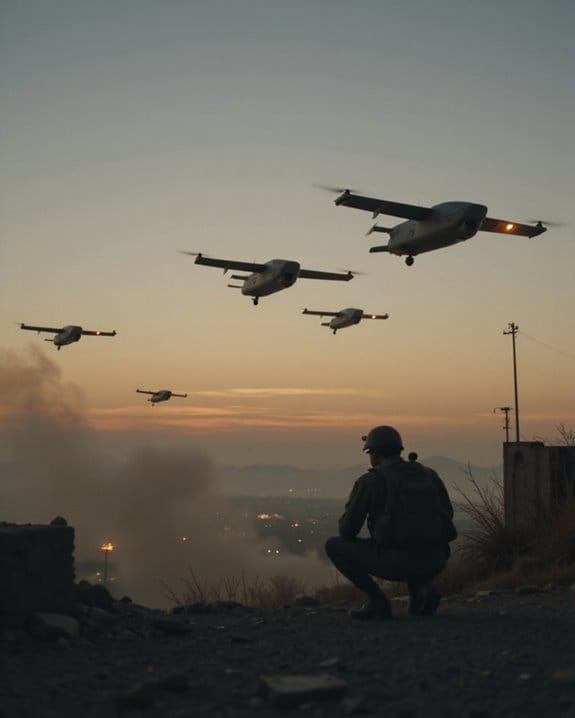
Although autonomous drones promise unmatched speed and efficiency, the risks they introduce are hard to ignore.
Product Overview:
Modern unmanned systems can conduct a DRONE ATTACK with precision, but don’t let the slick marketing fool you—machine vision still stumbles. Imagine a drone misidentifying a civilian as a hostile due to a sensor blur or software bug. That’s not just an “oops”—it’s a potential headline.
Detailed Analysis:
- Target Misidentification: Prone to software errors, increasing the chance of unintended casualties.
- Escalation Risk: Accidental strikes on neutral parties can spiral into broader conflicts.
- Nuclear Integration: Faulty AI logic could trigger catastrophic outcomes.
Recommendations:
If you’re in a civilian-heavy area, maintain human oversight. For isolated naval settings, unmanned systems are safer, but always scrutinize the software—hidden bugs don’t discriminate. Additionally, deploying anti-drone devices with features like frequency jamming and GPS disruption can enhance security and reduce risks associated with autonomous drones.
The Rise of Drone Swarms and Battlefield Transformation
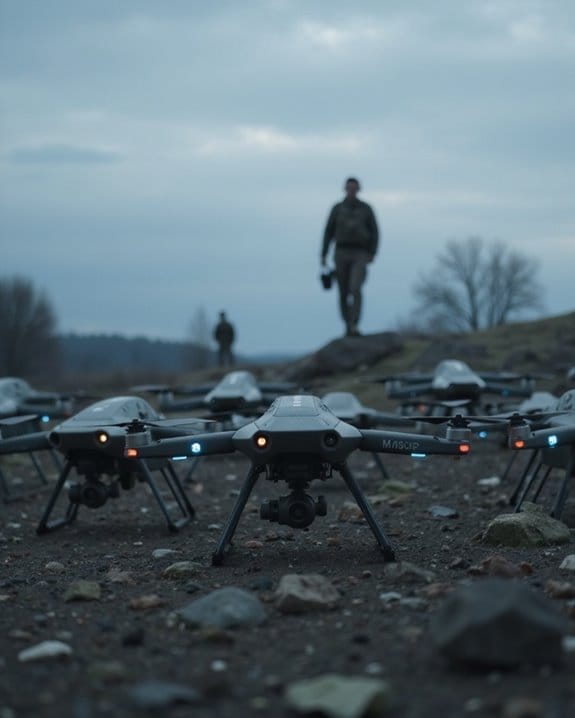
Swarm technology is changing the rules of engagement on modern battlefields. Unmanned aerial drone swarms now operate in large numbers, dramatically transforming the front line. Let’s break down why these swarms matter:
Product Overview
- AI-controlled swarms use the OODA loop, reacting faster than human operators.
- Ukraine’s push to produce one million small drones in 2024 shows this tech’s explosive growth.
Specifications & Comparisons
- Low-cost production allows even resource-limited groups to deploy impactful tactics.
- War-gamed scenarios show swarming drones inflict over 30% casualties on infantry.
- Russia’s adoption of mass robotic systems highlights the race for first-mover advantage.
Recommendations
- For military strategists: consider integrating unmanned aerial swarms for front line dominance.
- For defense planners: prioritize countermeasures—or risk falling behind in large numbers.
Operational Challenges and Limitations of Drone Technology
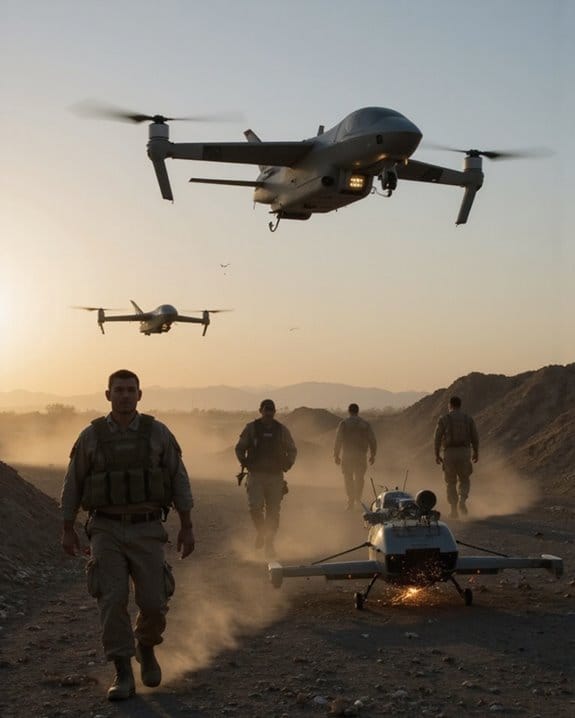
While drone swarms are rewriting battlefield strategies, it’s not all smooth flying for these robotic assets. According to the Royal United Services Institute, drones often struggle with accurate targeting, especially when relying on first-person-view drones that demand skilled operators. Here’s what you need to know:
- Data Processing: Rapid extraction and analysis are essential, but slow updates can stall real-time decisions.
- Reliability: Incidents like the RQ-21 Blackjack mishaps reveal significant vulnerabilities, often grounding missions.
- Training: Many soldiers lack hands-on experience with small drones, limiting their effectiveness.
- Development Delays: Domestic drone development, such as the Marine Corps’ precision fires program, faces bureaucratic slowdowns.
Global Impacts and the New Arms Race in Military AI

How is the rapid rise of AI-enabled drones changing the face of military power worldwide? You’re seeing a seismic shift as countries around the world race to develop and deploy these autonomous systems. Russian forces, for example, are exploring mass robotic swarms to overwhelm air defense systems, while Ukraine aims to produce one million small drones in 2024—proof that numbers can sometimes trump size.
Key Comparisons:
- Cost: Thousands of AI drones can be built for less than a single aircraft carrier.
- Accessibility: Smaller nations or non-state actors can now challenge traditional military powers.
- Escalation Risks: Rapid advancements may reward first-movers, raising global tensions.
Recommendation: If you’re planning military strategy or security policy, prioritize investments in AI countermeasures and air defense innovation—after all, drones don’t take coffee breaks.
Lessons From History: Adapting to Disruptive Military Innovations
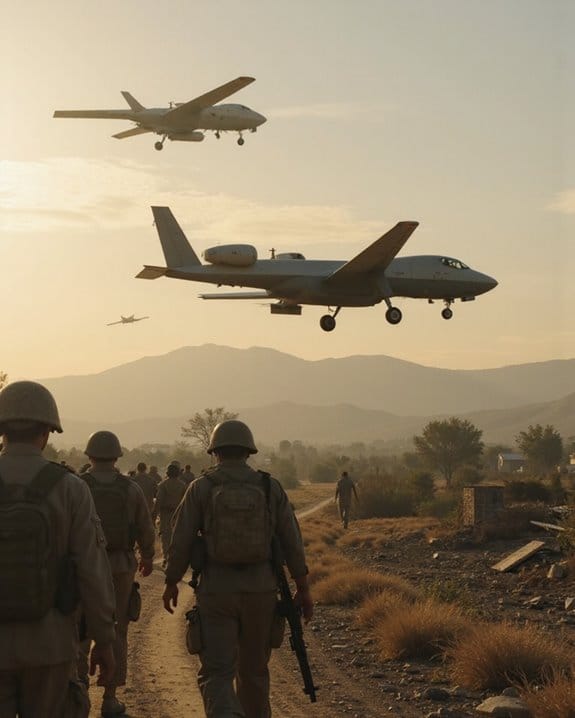
Why do military organizations so often struggle to keep pace with new technologies? History shows that even established defense systems, like the British Army in World War I, underestimated machine guns, initially allocating just two per battalion. Imagine relying on a single “magic wand” per 1,000 soldiers—hardly effective defense. Only after trench warfare stalemated did the defense industry ramp up production, doubling and then dramatically increasing machine gun numbers by 1918.
Key Lessons:
- Slow Adoption: Early reluctance to integrate disruptive systems can cause battlefield setbacks.
- Organizational Overhaul: The British Machine Gun Corps grew to over 130,000 men, showing how adapting requires structural change.
- U.S. Cautionary Tale: Delayed adoption in 1898 left forces exposed—a reminder that today’s drone revolution demands rapid, agile adaptation.
Frequently Asked Questions
Will Drones Replace Fighters?
With over 3,000 drone strikes verified in Ukraine in just one month, you might wonder if drones will replace fighters. They’ll play a bigger role, but you’ll still need humans for oversight, adaptability, and critical decisions.
Can Drones Replace Infantry?
You might think drones can replace infantry, but they can’t fully match what soldiers do. While drones handle some tasks like attacks or surveillance, they still struggle with complex, unpredictable environments where human adaptability is vital.
Will the Military Be Replaced by AI?
You’re wondering if the military will be replaced by AI. While AI’s rapidly advancing, you’ll still see humans involved for oversight and ethics. However, you can expect AI to increasingly handle roles once reserved for people.
How Have Drones Changed the Battlefield?
Did you know drones caused 50% of Russian T-90 tank losses recently? On today’s battlefield, you’re seeing drones deliver precise strikes, gather real-time intel, and even sink warships—transforming tactics and making warfare faster, smarter, and more unpredictable.


